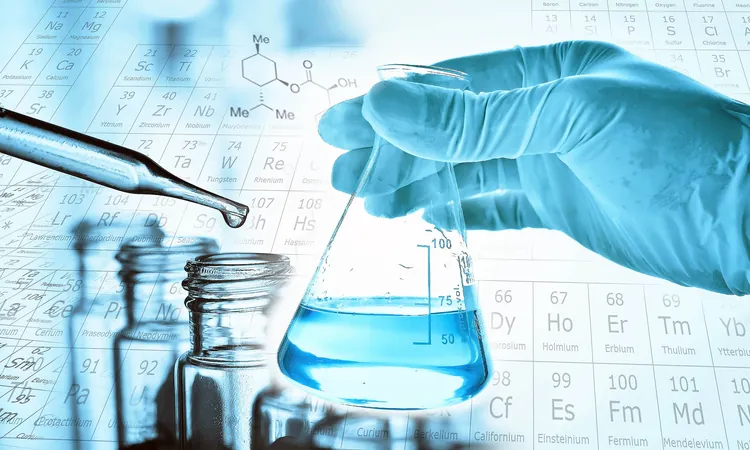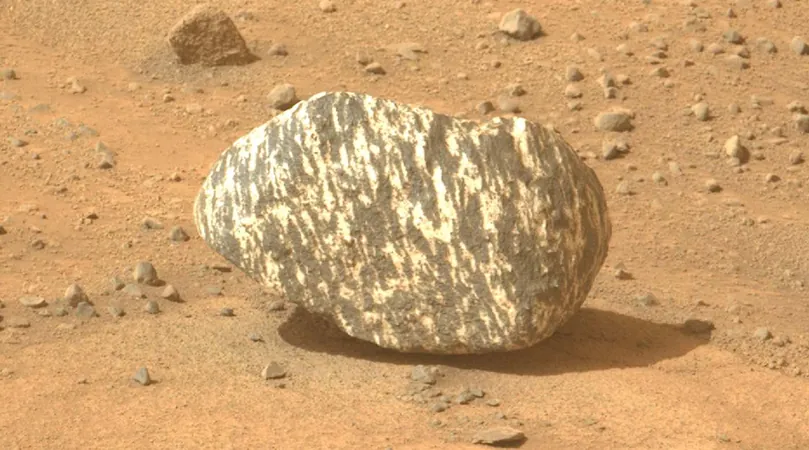
Scientists Capture Water Formation on Video: A Groundbreaking Discovery!
2024-10-04
Author: Nur
Have you ever considered how water is born? For the first time in history, scientists have captured the very moment water forms from its basic building blocks—hydrogen and oxygen—creating tiny bubbles right before our eyes.
This remarkable observation took place in a lab at Northwestern University, where a team of researchers sought to investigate how the metallic element palladium assists in this chemical reaction. They made this astonishing discovery at the nanoscale, sparking excitement in the scientific community.
One of the most intriguing aspects of this research is that the reaction occurs under mild conditions, raising hopes for its practical applications even in arid regions or extraterrestrial environments.
Significance of the Research
The study, headed by Vinayak Dravid, a professor at Northwestern’s McCormick School of Engineering and director of the NUANCE Center, highlights the significance of visualizing water formation at such a small scale. "By directly observing nanoscale water generation, we identified optimal conditions for rapid water formation under ambient circumstances," Dravid stated.
Implications for Space Exploration
These findings offer implications not only for our planet but for future exploration of deep space. Picture the survival scenarios similar to the blockbuster movie ‘The Martian,’ where astronaut Mark Watney ingeniously produces water from rocket fuel! Dravid's team has discovered a more efficient alternative—mixing palladium with gases rather than relying on combustion.
Historical Context
The science behind this breakthrough can be traced back to the early 1900s when the role of palladium in water generation was recognized but not understood. Yukun Liu, a PhD candidate in Dravid's lab and the first author of the study, explained, "While it had long been acknowledged, we needed the ability to visualize water formation and analyze the atomic structure to fully grasp the reaction process."
Innovative Techniques
Just nine months before this study, Dravid's team unveiled a novel method to observe gas molecules in real time, utilizing a unique super-thin glassy membrane structured like honeycomb to hold gases during examination in high-vacuum electron microscopes. This allowed them to achieve an unprecedented resolution of just 0.102 nanometers, advancing far beyond previous technologies.
Observations and Findings
The team’s observations confirmed that when hydrogen atoms infiltrated the palladium’s lattice, they witnessed the formation of the smallest water bubbles ever observed directly. "We believe this could be the tiniest bubble ever captured, and we were fortunate to record it to validate our findings," Liu recounts.
Revolutionary Potential
Zenith in water generation occurred when researchers experimented with the proportionality of hydrogen and oxygen, discovering that introducing hydrogen before oxygen led to the quickest reactions. This could revolutionize how we think about water generation, especially in space exploration.
Imagine a future where astronauts fill palladium with hydrogen ahead of their journeys and then simply add oxygen to produce fresh drinking water or nurture plants! Although this study focused on nanoscale reactions, scaling up to larger sheets of palladium could result in significant quantities of water.
Resource Sustainability
Despite the cost of palladium, Liu assures it’s a reusable resource: “Our process doesn’t consume the palladium, only the gases, with hydrogen being the most abundant in the universe. We can recycle the palladium platform countless times.”
The research is set to revolutionize not just water generation but also sustainable practices, potentially paving the way for human life on other planets. The study has been published in the Proceedings of the National Academy of Sciences, and this discovery might be just the beginning of extraordinary advancements in our understanding of chemistry and water resources.
Stay tuned for more updates on this groundbreaking research!


 Brasil (PT)
Brasil (PT)
 Canada (EN)
Canada (EN)
 Chile (ES)
Chile (ES)
 España (ES)
España (ES)
 France (FR)
France (FR)
 Hong Kong (EN)
Hong Kong (EN)
 Italia (IT)
Italia (IT)
 日本 (JA)
日本 (JA)
 Magyarország (HU)
Magyarország (HU)
 Norge (NO)
Norge (NO)
 Polska (PL)
Polska (PL)
 Schweiz (DE)
Schweiz (DE)
 Singapore (EN)
Singapore (EN)
 Sverige (SV)
Sverige (SV)
 Suomi (FI)
Suomi (FI)
 Türkiye (TR)
Türkiye (TR)